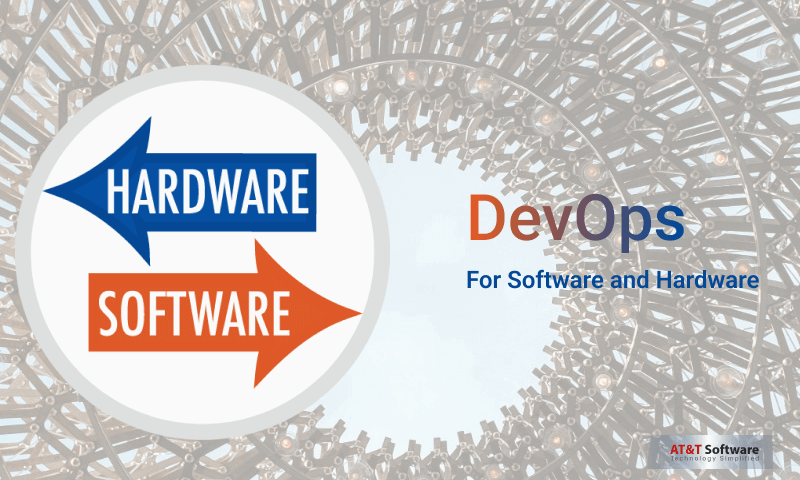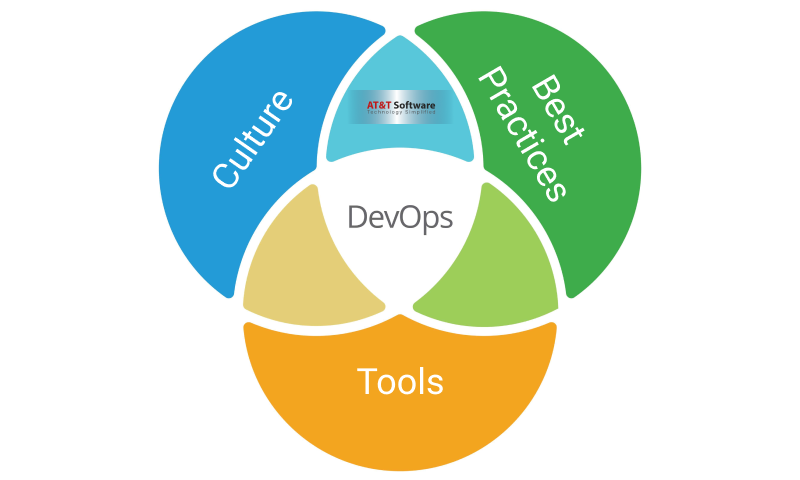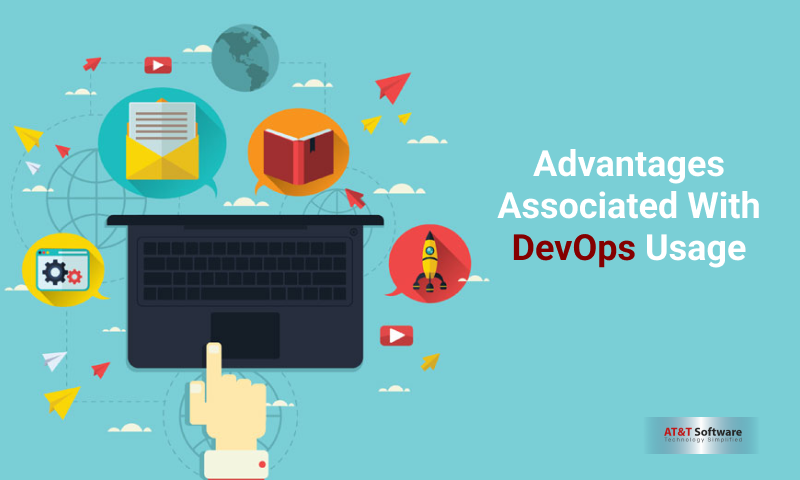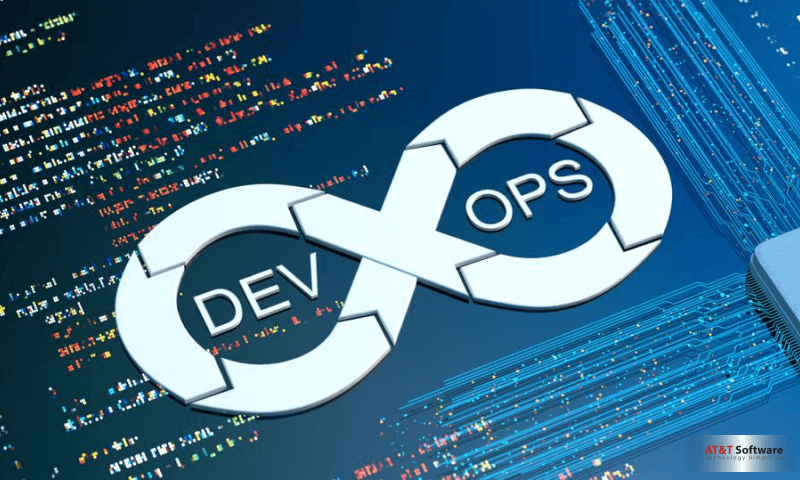A Brief Introduction To DevOps For Software and Hardware
home / blog / A Brief Introduction To DevOps For Software and Hardware

In case you are wondering or intrigued about including DevOps for software and hardware, you have come to the right place. To know in brief what DevOps is, and what it is capable you will just have to tag along. So, before we go any further, let us first understand what DevOps is referred to.
DevOps or Development and Operations have multiple interpretations. It is a greater idea and approach towards combining the Development, Operations, and IT into one unit. Back in the day, IT sectors used to have an isolated approach, with separate sectors working for a single business unit. DevOps looks at bringing these three sectors closer.
DevOps for software and hardware implies the union of developers and operators to collaborate on rapid software development. Application and web development which used to be the most segregated of all can now use a breather with the philosophies of DevOps.
The process of DevOps can be stated as a careful exchange between the developers and operations that they are working with, for a better technological result indeed. Developers are working on the very codes of the operation to see and understand its impact on the infrastructure of the system.
While operations help create automated, reliable, self-serving tools and infrastructure. The entire process has to be conducted without tampering with software binary building blocks. Keeping it secure, while it flows through a CI/CD pipeline that is fully automated. So, here are the reasons why DevOps for software and hardware is important for software development.
- It helps create infrastructures and tools that are automated, have self-serving abilities, and are reliable.
- A complete CI/CD pipeline that ensures an end-to-end solution.
- These types of software are built with feedback loops. This allows it to learn continuously and quick recovery.
- By bringing codes into modern software development methodology DevOps presents a unique solution.
- Learning and understanding how codes may affect the system, and then implying them accordingly that works for the company or project.
- Helps the production system in monitoring and troubleshooting.
As mentioned before, prior to the idea of DevOps for software and hardware, there was a lack of engagement. This resulted often in developers being handed with wrong tools, and software that operate quite well but may not follow the constraints of the production system or does not abide by the security concerns. This is why DevOps become an utterly essential tool for building the necessary bridges for better software development.
Principles Of DevOps

DevOps for software and hardware offers the technological prowess that a company requires There is too much competition and companies want to roll out their software and features before anybody else offers something similar or better. This race is what defines the worth and longevity of any company, at least in the tech field.
The purpose of DevOps is to provide agile practices that remove any problem that was visible in the first place. To elaborate, DevOps has three pillars or principles upon which it is founded. These are popularly known to be, culture, the best practices, and the tools involved in developing one fine software, web solutions, or developing applications. Let us dive deep into the three main principles of Development and Operations.
1. Culture
The dream of DevOps for software and hardware is embedded in the informality of development, IT, and Operation working in collaboration with each other as a team. The culture it is rooted in is accountability, automation, communication, increased collaboration, and shared responsibility.
This culture is focused on trial and error detection and collecting early feedback as well as learning continuously. It provides a safe environment, that gives full accountability to each team but not being harsh at times of conflict.
2. Best Practices
Every company has its very own DevOps best practices that work for its systems. The practices are made flexible to suit different company or team standards, setups, capabilities, and several other factors that are relevant to the company or team alone. You can adopt any set of practices that impacts the end result of developing better software at a faster rate. So here are a few DevOps practices that you can adopt.
More Involvement Of Developers Into Operations
Involving developers into Operations allows them to take a break from their world of codes and look at the results and how it is being designed to run. In this, they get to be aware of how the codes they design when changed can actually impact the software or system. By understanding how the changes can be implemented for certain improvements. Having access to production systems, developers can also troubleshoot and monitor things and also take part in ‘on call’ issues.
Operators Involvement With Developers
As the three sectors together form the finished product, it is severely important for the Operations to be aware of the changes. This way they can assume what could be the possible effects that it will have on the production system. By the same margin, they can tip off the developers about the deployment, hardware constraints, monitoring, production system security, and tooling and troubleshooting.
Integrating Version Control
In DevOps for software and hardware the concept of ‘code’ has been extended to the production system. This is why a wide practice has been going on of using version control systems for source code. It is has noted to be practicing version control of anything that takes part within the system runtime. That is to say, parameters, settings, software and hardware configuration, etc, and other things.
Compatibility With Changes In Infrastructure
There are some methods of agility in software development. However, when it comes to the infrastructure. It is important to treat the infrastructure the same as the codes. That means, applying the changes discreetly in small steps and testing the system thoroughly throughout the process to have the best outcome.
Taking The Route To Automation
Since Industrialization, one thing has been clear, that machines and systems can be quite accurate than manual labor. For a more error-free and scalable outlook, DevOps for software and hardware is the way of countering back with automation. Every change must undergo the process of automation being part of the CI/CD pipeline.
Ceaseless Integration/Delivery/Deployment
The software development system is automated by the CI/CD pipeline. CI is referred to as Continuous Integration while CD stands for Continuous Delivery. Continuous Integration is the part that builds stages and runs tests, while Continuous Delivery is the part that helps in the safe deployment of the new version. This is why it becomes essential to integrate any changes in the software delivery system through the CI/CD pipeline. If something fails somewhere, it will instantly send feedback and work on a fast recovery.
3. Tools
In DevOps for software and hardware ideas, usage of the same tools, hardware resources, and configuration for the production, staging, and development is quite important. As the end product is only the assimilation of the work efforts of different teams, all the props should be present for all teams to use as well. However, there can be slight shifts made to make it more flexible for any individual company.
DevOps has different tools that are applicable to different companies. Due to the flexibility of DevOps different categories are also embraced by companies. There are a few specific categories and corresponding tools available in the market that you can choose from.
Source Control
Source control tools are the foundation of the best practices in DevOps leading up to version control. DevOps for software and hardware go on to use the chosen tools for settings, version controlling files, and anything that has to do with a text file. The usage of the same tools for Operation configuration of scripts as well as the source code created by Developers.
Management Of CI/CD Pipeline
CI/CD pipeline which stands for Continuous Integration and Continuous Deployment tools are by far the most critical for automation. Without automation, the short and rapid release cycles are interrupted.
Testing
One of the fundamental phases of the DevOps lifecycle is testing. Continuous Integration with combining testing tools provides for test automation. The test automation provides for the most needed in the production of rapid feedback cycles involved in DevOps.
Monitoring
DevOps for software and hardware was created through observation. Hence it is only fitting that, continuous monitoring on every stage of the software development. This also allows in the detection of errors at the early stages and working on a remedy.
Security
Security is an essential factor for DevOps. Which is the reason you will come across different tools at different stages providing security.
Binary Management
Managing the binaries of an organization is one of the prime things that reduce the complexities of a repository manager. Organization binaries can be developed both in-house and from downloading components from the cloud. Either way, it speeds up the builds by reducing the release cycles. Repository managers should be flexible and universal enough to integrate, blending within the DevOps ecosystem.
Collaborations
DevOps for software and hardware have always had elements of communication and collaboration. You will find several tools that are included for messaging, release planning, ticketing, and other things.
Advantages Associated With DevOps Usage

DevOps is one of the best versatile apps that have multiple applications. People from varied profiles used it for multiple reasons. DevOps has a wide range of applications and benefits every user, from an IT consultant to an accountant everyone finds it quite useful. Let’s have a look at some of its advantages.
Ensure Product Quality
DevOps allows the deployment of products with fewer bugs. With frequent deployment, the cycle also gets shorter. Hence, completely providing the opportunities to improve product quality more quickly.
Sustaining Changes
Small and gradual changes provide a safer option. In this way, it reduces both the chance of failure and recovery time.
Reduced Release Cost
DevOps for software and hardware practices naturally reduces the release cost. This is caused by several reasons ranging from, fewer bug fixes, a pipeline that is fully automated, and shorter cycle times.
Cutting Down On Unplanned Work
Automated features alongside lesser failures leave them with lesser errors to fix. As there is lesser time to spend on unplanned errors, the team has renewed spirit to do something new instead.
Fast Marketing
With all the time-saving practices, you get to launch the product more quickly. The cause of the fast marketing standards is credited to the fewer issues and shorter cycle times.
Customer Satisfaction
DevOps for software and hardware caters to customer satisfaction. Having said that, it is important to clarify customer recommendations and integrate quick fixes. New features and upgrades are quite important to follow customer requests.
Improved Revenue
With the sheer satisfaction of the customers getting better, you can expect to have an improved revenue structure as well. Satisfied customers are bound to buy more products from you.
Robust Infrastructure
The infrastructure is modified in small steps and includes testing in all the stages of development. For this reason, setting and visioning for configuration become more reliable and stabilized.
Work Satisfaction
As the teams get to be more innovative and freely work on new ideas and things, they get to be more satisfied as well. At least they will surely not have to rework and fix bugs.
Reduced Code Waste
The best way to cut down on the extra amount of work is by reducing the development codes that will not be used. DevOps for software and hardware practices work in small chunks to ensure there is reduced code waste.
Faster Release
With all that working in the favor along with the automation, codes can be transmitted from development to production almost in an instant. It makes the release faster inevitably.
We at WebRock Media Aiming to Offer Specific Technical Assistance

As the leading provider of tech services, WebRock Media has made it a mission to provide the customers with the most promising alternatives available in the industry. There has been much discussion on DevOps for software and hardware, but unfortunately, there aren’t many solutions available that are willing to follow through on their claims. It was a struggle for us, but we rose to the occasion and set out on our quest to provide high-quality services to our customers.
For the appropriate reasons, WebRock Media is well-known in the world. In this business, it is our primary goal to guarantee that you are presented with the most promising services that are specifically tailored to your needs.
The goal is straightforward and attainable when we serve you DevOps for software and hardware. Currently, our sole aim is to work in this industry and guarantee that when it comes to the realm of technical growth, there is nothing that can be considered inferior. From the beginning, we have made it our mission to meet the unique requirements of each and every customer.
Conclusion

DevOps for software and hardware is an intricate process that is developed keeping in mind the people working in the field. Software development has three separate teams working for a single software or application development. DevOps helps create the bridge required to bring these three sectors together, and that is why it has much importance.

I hope you enjoy reading this blog post.
Would you like to get expert advice? Schedule a Call
About Webrock Media
Webrock Media comes with an incredible team of website and mobile application developers who can customize the perfect solutions to transform your business. We think ourselves to be an ideal ‘Technology Simplified Destination’ as we know how to perfectly merge creativity and programming to build robust websites for our clients.
